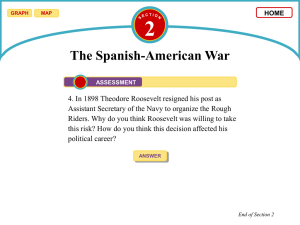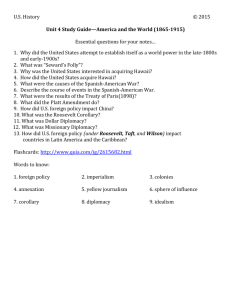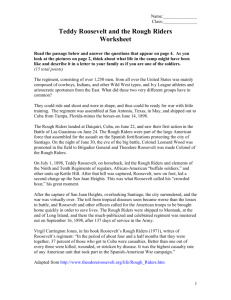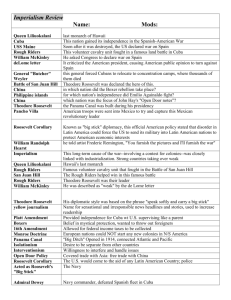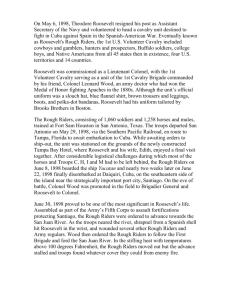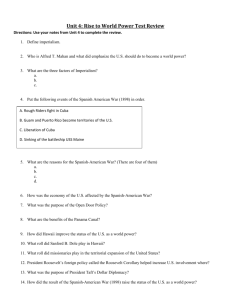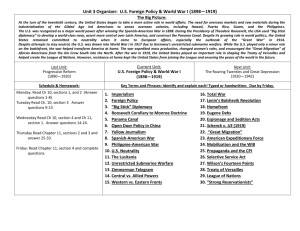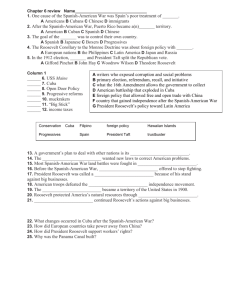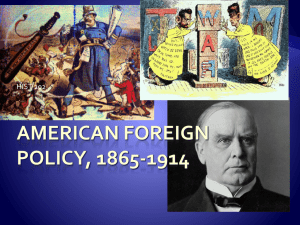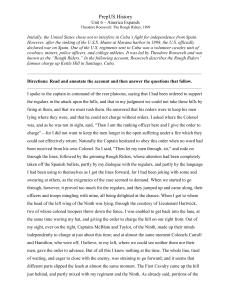The Spanish-American War
advertisement
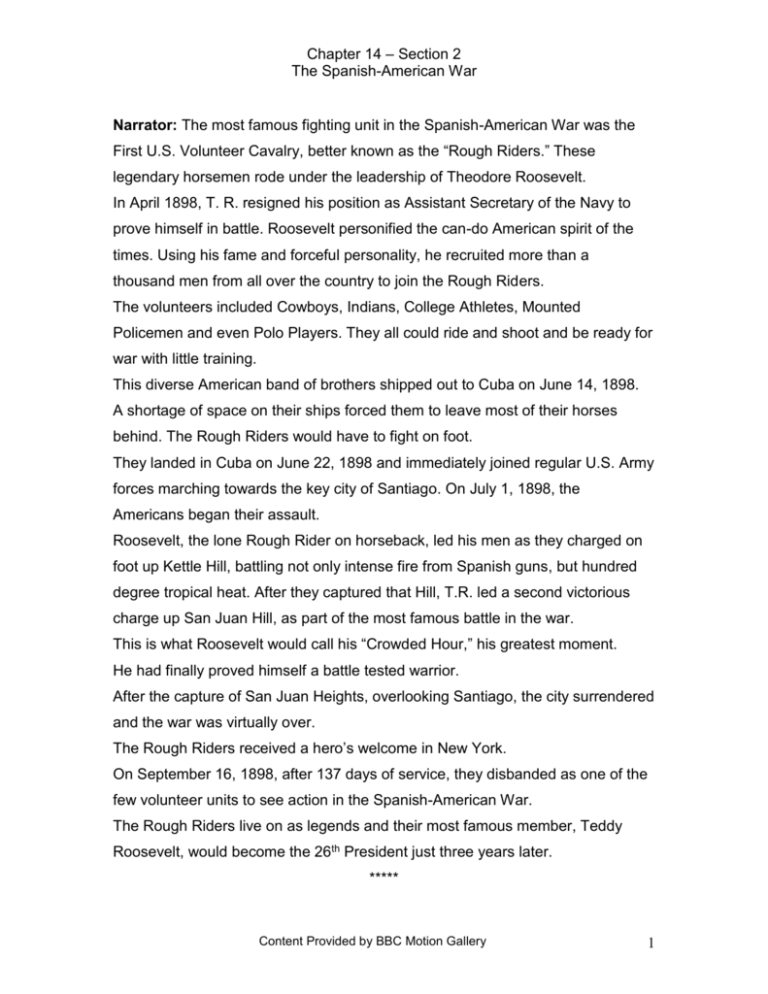
Chapter 14 – Section 2 The Spanish-American War Narrator: The most famous fighting unit in the Spanish-American War was the First U.S. Volunteer Cavalry, better known as the “Rough Riders.” These legendary horsemen rode under the leadership of Theodore Roosevelt. In April 1898, T. R. resigned his position as Assistant Secretary of the Navy to prove himself in battle. Roosevelt personified the can-do American spirit of the times. Using his fame and forceful personality, he recruited more than a thousand men from all over the country to join the Rough Riders. The volunteers included Cowboys, Indians, College Athletes, Mounted Policemen and even Polo Players. They all could ride and shoot and be ready for war with little training. This diverse American band of brothers shipped out to Cuba on June 14, 1898. A shortage of space on their ships forced them to leave most of their horses behind. The Rough Riders would have to fight on foot. They landed in Cuba on June 22, 1898 and immediately joined regular U.S. Army forces marching towards the key city of Santiago. On July 1, 1898, the Americans began their assault. Roosevelt, the lone Rough Rider on horseback, led his men as they charged on foot up Kettle Hill, battling not only intense fire from Spanish guns, but hundred degree tropical heat. After they captured that Hill, T.R. led a second victorious charge up San Juan Hill, as part of the most famous battle in the war. This is what Roosevelt would call his “Crowded Hour,” his greatest moment. He had finally proved himself a battle tested warrior. After the capture of San Juan Heights, overlooking Santiago, the city surrendered and the war was virtually over. The Rough Riders received a hero’s welcome in New York. On September 16, 1898, after 137 days of service, they disbanded as one of the few volunteer units to see action in the Spanish-American War. The Rough Riders live on as legends and their most famous member, Teddy Roosevelt, would become the 26th President just three years later. ***** Content Provided by BBC Motion Gallery 1
